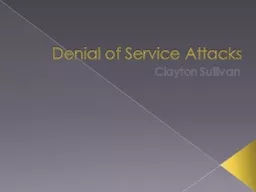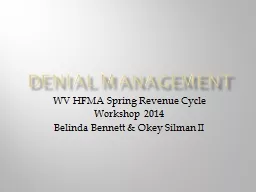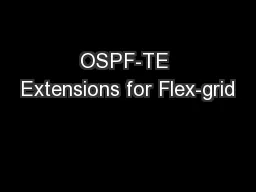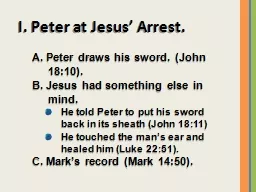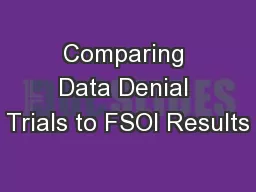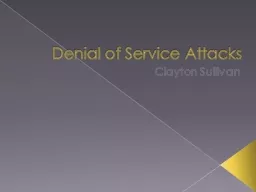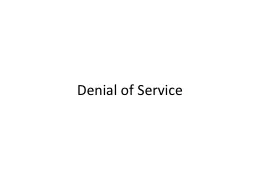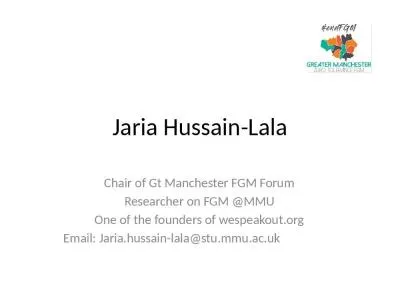PDF-Accurately Measuring Denial of Service in Simulation and Testbed Experiments Jelena Mirkovic
Author : conchita-marotz | Published Date : 2015-01-28
Thomas Abstract Researchers in the denial of service DoS 64257eld lack accurate quantitative and versatile metrics to measure service denial in simulation and testbed
Presentation Embed Code
Download Presentation
Download Presentation The PPT/PDF document "Accurately Measuring Denial of Service i..." is the property of its rightful owner. Permission is granted to download and print the materials on this website for personal, non-commercial use only, and to display it on your personal computer provided you do not modify the materials and that you retain all copyright notices contained in the materials. By downloading content from our website, you accept the terms of this agreement.
Accurately Measuring Denial of Service in Simulation and Testbed Experiments Jelena Mirkovic: Transcript
Download Rules Of Document
"Accurately Measuring Denial of Service in Simulation and Testbed Experiments Jelena Mirkovic"The content belongs to its owner. You may download and print it for personal use, without modification, and keep all copyright notices. By downloading, you agree to these terms.
Related Documents


